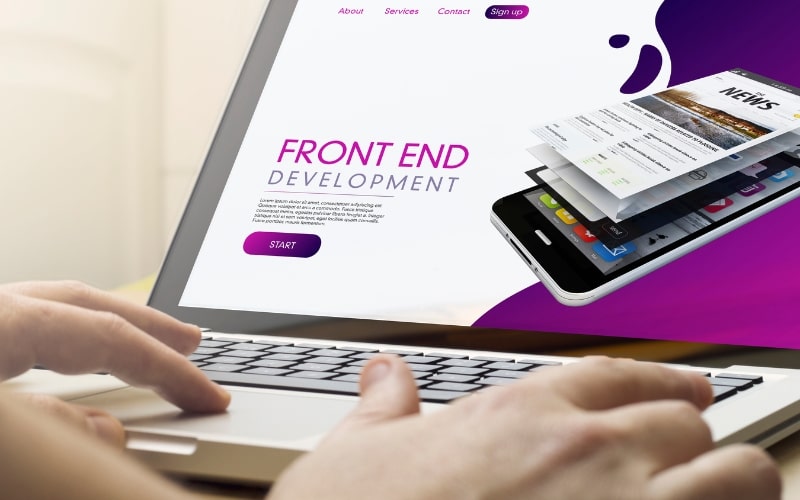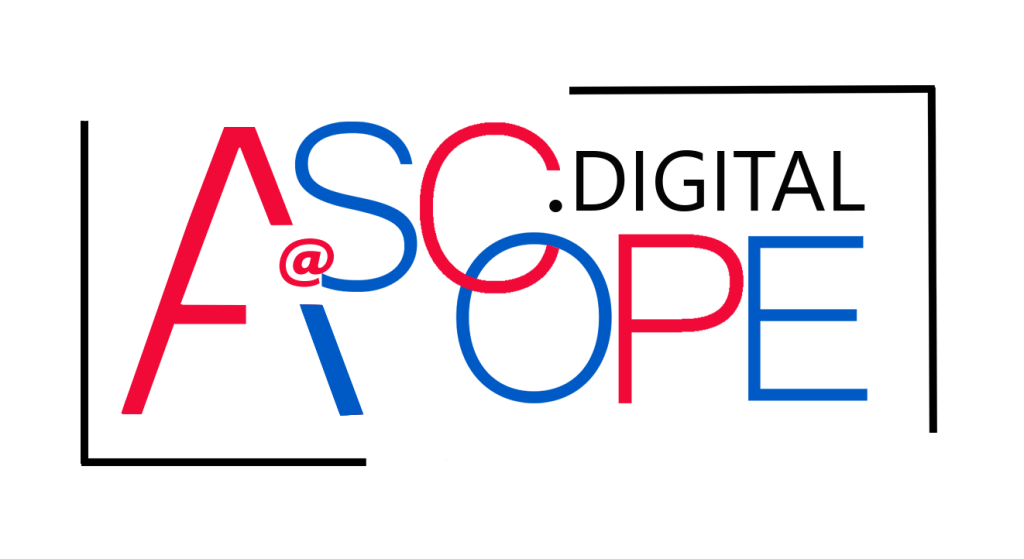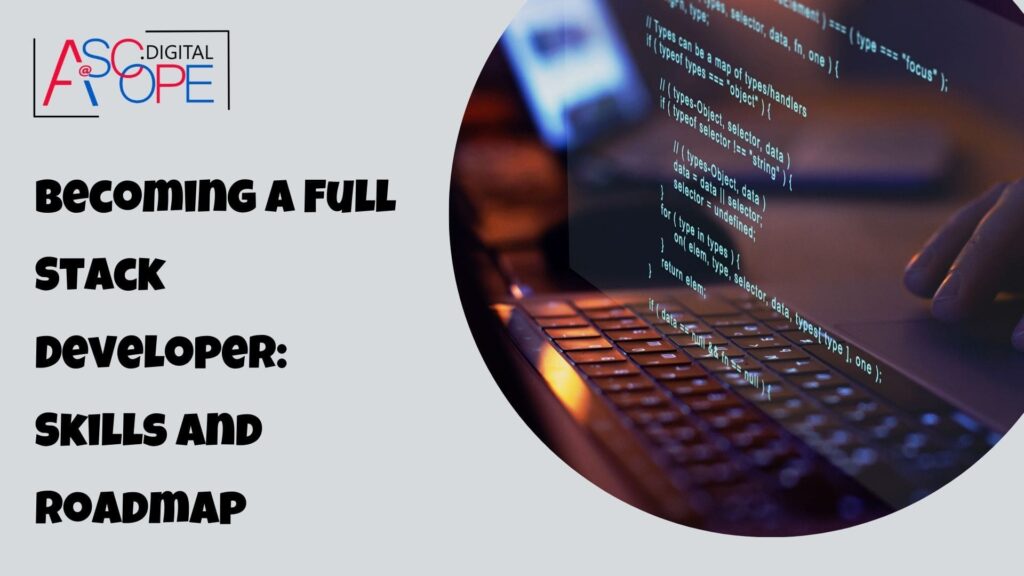In today’s rapidly evolving tech landscape, full stack development has emerged as a pivotal role combining both front-end and back-end expertise. Full stack developers are highly versatile professionals capable of handling every aspect of web application development, from designing user interfaces to managing databases and server-side logic. This blog serves as a comprehensive guide to aspiring developers looking to embark on the journey of becoming proficient in full stack development.
What is a Full Stack Developer?
A full stack developer is someone who possesses a broad range of skills encompassing both front-end (client-side) and back-end (server-side) development. They are adept at not only creating visually appealing and interactive user interfaces but also designing and implementing the underlying systems that power these interfaces.
Skills Required to Become a Full Stack Developer
Proficiency in Front-End Technologies:

Front-end development involves creating the parts of a website or application that users interact with directly.
HTML/CSS: Foundation of web development, used to structure and style web pages respectively. Mastery of semantic HTML and responsive CSS is essential for creating modern, accessible interfaces.
JavaScript: The core programming language of the web, used for adding interactivity and dynamic behavior to websites. Understanding concepts like DOM manipulation, event handling, and asynchronous programming (Promises, Async/Await) is crucial.
Front-end Frameworks/Libraries: Frameworks like React.js, Angular, or Vue.js streamline the development process by providing reusable components and state management solutions. These frameworks are widely adopted in industry-standard applications and offer robust ecosystems for building scalable front-end solutions.
Understanding of Back-End Technologies:
Back-end development involves handling the server-side logic and database management that supports the front-end of an application.
Server-Side Languages: Depending on preference and project requirements, full stack developers often work with languages such as JavaScript (Node.js), Python (Django, Flask), Ruby (Rails), PHP (Laravel), or Java (Spring Boot). Each language has its strengths in terms of performance, scalability, and community support.
Databases: Knowledge of databases is crucial for storing and retrieving data efficiently. Understanding relational databases (e.g., MySQL, PostgreSQL) and NoSQL databases (e.g., MongoDB) allows developers to choose the right tool for the job based on project needs.
APIs (Application Programming Interfaces): Full stack developers should be proficient in designing and consuming APIs. RESTful APIs are commonly used to facilitate communication between different parts of an application or between different applications altogether.
Version Control Systems:
Git: Proficiency in Git is essential for managing and tracking changes in codebase, collaborating with team members, and ensuring codebase integrity through version control.
Basic Design Skills:
UI/UX Principles: While not always the primary responsibility of a full stack developer, understanding basic UI/UX principles is beneficial for creating intuitive and user-friendly interfaces. Knowledge of design tools and principles helps in collaborating effectively with design teams.
Experience with Development Tools:
IDEs (Integrated Development Environments): Tools like Visual Studio Code, IntelliJ IDEA, or Atom provide robust environments for writing, debugging, and testing code across both front-end and back-end applications.
Command Line Interface (CLI): Proficiency in command-line tools is essential for tasks such as running scripts, managing dependencies, and deploying applications to servers or cloud platforms.
Roadmap to Become a Full Stack Developer
Foundation in Web Development:
Begin by mastering HTML/CSS to create static web pages and progressively enhance skills in responsive design and CSS frameworks like Bootstrap or Tailwind CSS.
Learn JavaScript thoroughly, covering ES6+ features, asynchronous programming, and functional programming concepts.
Mastering Front-End Development:
Dive deeper into front-end frameworks such as React.js, Angular, or Vue.js. Understand component-based architecture, state management libraries (e.g., Redux for React), and routing mechanisms.
Explore advanced topics like server-side rendering (SSR) and client-side hydration for optimizing performance in large-scale applications.
Learning Back-End Development:
Choose a server-side language (e.g., Node.js with JavaScript) and delve into server-side frameworks like Express.js. Learn to build RESTful APIs, handle authentication and authorization, and integrate with databases.
Gain proficiency in database management, including schema design, querying (SQL or NoSQL), and understanding database optimization techniques.
Building Full Stack Applications:
Combine front-end and back-end skills to build full stack applications from scratch. Practice integrating front-end interfaces with back-end APIs, implementing user authentication, and handling data persistence.
Work on projects that mimic real-world scenarios to gain practical experience and showcase your skills to potential employers or clients.
Version Control and Deployment:
Learn Git commands for version control, branching strategies, and collaborating with team members using platforms like GitHub or GitLab.
Understand deployment processes, including containerization (using Docker), continuous integration/continuous deployment (CI/CD) pipelines, and deploying applications to cloud platforms (e.g., AWS, Azure, Heroku).
Continuous Learning and Specialization:
Stay updated with emerging technologies, frameworks, and best practices through online courses, blogs, podcasts, and participation in developer communities.
Consider specializing in areas such as DevOps (automation, infrastructure as code), cybersecurity (secure coding practices, data protection), or domain-specific applications (e.g., fintech, e-commerce).
Challenges and Tips for Aspiring Full Stack Developers

Overcoming the Learning Curve:
Break down complex topics into smaller, manageable tasks. Focus on understanding fundamental concepts before moving on to advanced topics.
Build projects incrementally, starting with simple applications and gradually increasing complexity to reinforce learning.
Staying Updated:
Follow industry thought leaders, subscribe to tech newsletters, and participate in online forums (e.g., Stack Overflow, Reddit communities) to stay abreast of industry trends and best practices.
Attend webinars, workshops, and conferences to network with peers and gain insights into the latest advancements in full stack development.
Networking and Collaboration:
Join developer communities on platforms like GitHub, Stack Overflow, or LinkedIn to connect with like-minded professionals, seek mentorship, and collaborate on open-source projects.
Participate in hackathons or coding challenges to enhance problem-solving skills and showcase your abilities to potential employers.
Leveraging Full Stack Development for Business Growth
As a full stack developer, mastering both front-end and back-end skills can significantly enhance your ability to create comprehensive and efficient web applications. Understanding the intricacies of user experience design, combined with robust server-side functionality, allows you to develop websites that are not only visually appealing but also highly functional and responsive. This holistic approach ensures seamless user interactions, which is crucial for retaining visitors and converting them into customers.
By integrating advanced analytics and optimization techniques, full stack developers can also improve the website’s performance, leading to faster load times and better search engine rankings. This, in turn, attracts more organic traffic and increases user engagement. Thus, improving traffic and sales for your website. Read more on the other reasons why your website isn’t getting traffic to identify additional areas for improvement. Adopting a full stack development approach ensures that every aspect of your website contributes to its overall success, driving business growth and customer satisfaction
Conclusion
Becoming a full stack developer requires dedication, continuous learning, and a passion for innovation in web development. By mastering both front-end and back-end technologies, developers can position themselves as versatile professionals capable of contributing to diverse projects and driving business outcomes through technology. Start your journey today, follow the structured roadmap outlined in this guide, and embrace the challenges and opportunities that come with becoming a proficient full stack developer.


